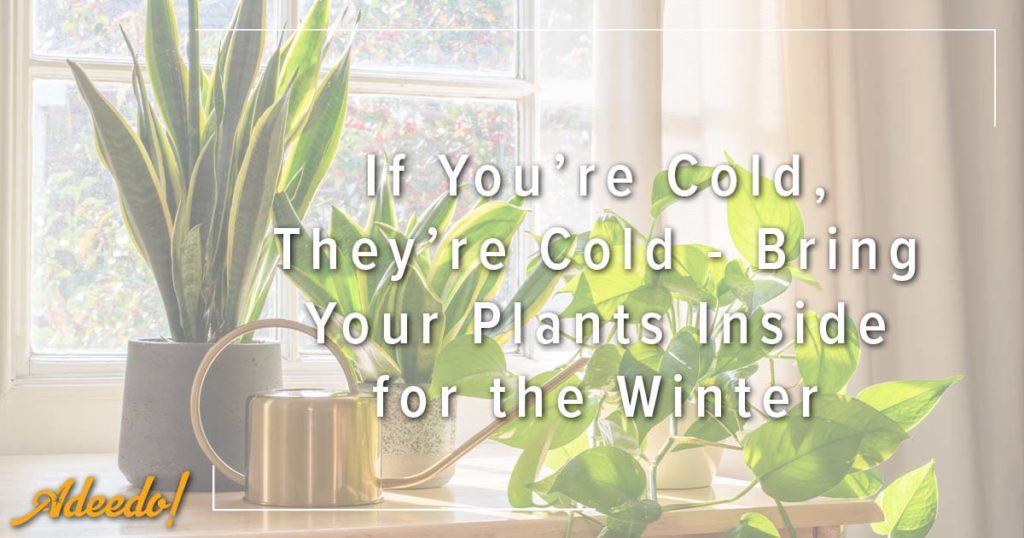Bringing your plants inside for the winter is essential to their overall health and well-being. Unfortunately, winter can wreak havoc on your plants and even kill them—even in Southern California, but there are simple steps you can take to help prevent this. First and foremost, bring your plants inside for the winter.
When to Bring Plants Inside
It’s time to bring your plants inside for the winter when the temperature drops below 55 degrees Fahrenheit. If you don’t have a thermometer, check your plant’s leaves. If they are glossy and green, leaving them outside is an option, but keep a close eye on them. However, if they’re turning yellow or brown, it’s time to bring them inside.

Gradually move your plants into brighter light but wait to put them near windows that get direct sunlight until they adjust to the new environment. Also, ensure there isn’t any wind blowing on the plants because this can cause further stress on your plants during their indoor transition.
Where to Place Your Plants
Plants need light, but not too much. And they need water, but not too much. And they need warmth, but not too much.

It doesn’t have to be. Here are some tips for finding the right spot for your plants:
- Place plants in a south-facing sunny window or one that at least gets some sunlight during the day. A south-facing window will give your plants enough light throughout the winter. But try not to leave plants in direct sunlight. You don’t want to cause leaf burn.
- Consider buying a grow light if you have no windows with suitable light. You can even keep all your plants in one corner with a grow light.
- Make sure there are no cold drafts near your plants. There’s no point in bringing them in from the cold to place them in another chilly environment.
Debug and Clean Plants
One thing many people forget about when bringing outdoor plants inside is cleaning. A dirty plant can harbor pests and diseases, which can be transferred to other plants in your home.
Dead leaves provide food for many pests, so regularly cleaning up old leaves will help stop bug numbers from growing.
Inspecting for pests will help you catch any problems before they get out of hand. Checking every day is ideal, but at least once a week should be enough if it’s impossible to do more frequently.
Cut Back on Watering
It’s advisable to cut back on watering when you bring outdoor plants inside.

Use room temperature or tepid water when you water your plants — not cold or hot. Cold water will cause root damage and encourage diseases such as root rot, while hot water can dry out plant leaves quickly.

Get the Light and Humidity Right
Some plants will do just fine with low levels of light. Others will die without it. You can use a grow light to supplement natural light if necessary. In this case, ensure you carefully position your lights so as not to burn or scorch the leaves of any plants that are sensitive to heat.
Keep the temperature and humidity of your home comfortable by booking a HVAC tune-up with Adeedo.

